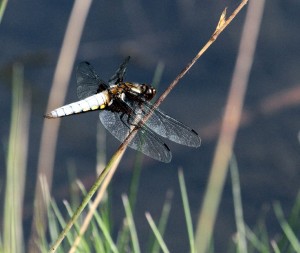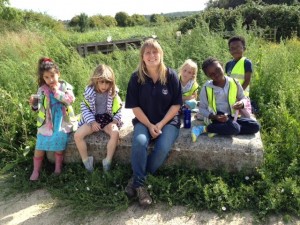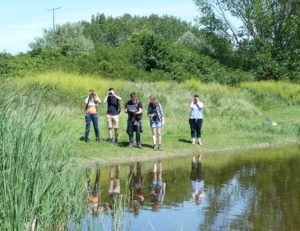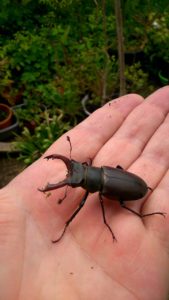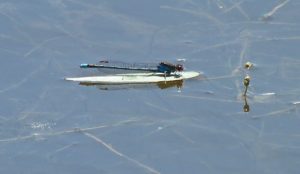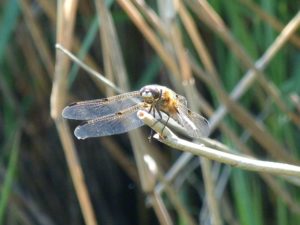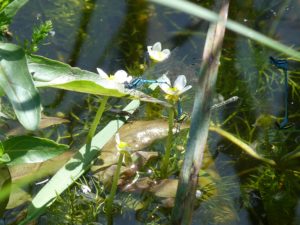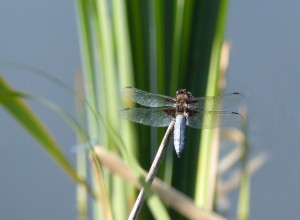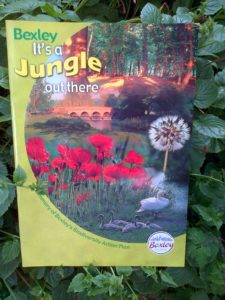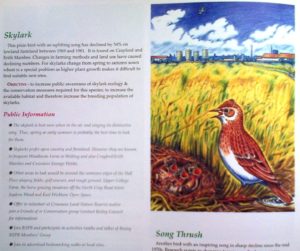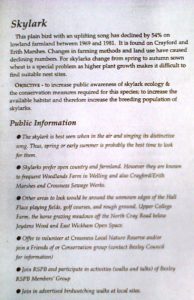DEADLINE EXTENDED TO 28th JULY – so you might now be able to read it and comment. You don’t have to say something about every aspect, but just the ones that bother you the most. The more people criticise various anti-nature/wildlife proposals the better.
_______
At 117 pages, if you hadn’t read the ‘Growth Strategy’ already, you probably won’t manage to, let alone write a response, by the deadline for comments (send to growthstrategy@bexley.gov.uk by 5pm Friday 28th July). Here’s a summary of what it’s about, along with some suggestions further down the post for comments you could make if you want to put in a ‘last minute’ submission. It’s mainly about lots and lots more houses/concrete and ‘grey infrastructure’, with little detail on how the claim of a net increase in biodiversity can result from this, plus repeated misuse of the word ‘sustainable’ There will be further stages in the process, but some opposition/criticism now would help later on. If you haven’t time to look at the longer comments (below), please write in and say that you do not share Bexley’s apparent optimism about boundless resource availability (energy, water, raw materials etc.) and do not believe real sustainability has been taken into account, that you object to a net loss of ground level open space (public or not), that you object to building on designated Sites of Importance for Nature Conservation (including building roads), to more road traffic bridges over the Thames and to the failure to set out a clear and credible vision for nature in Bexley at the heart of this document which instead comprises pages of text dealing mainly with yet more with human ‘demands’.
[Yes I know it would have been helpful to post this a lot sooner and to have made a better job of it. Unfortunately I am very much up against the deadline on this myself and have only recently finished analysing the document properly. Sorry!]
IN SHORT:
Bexley Council’s new ‘Growth Strategy’ knows no bounds.
Bexley’s existing Core Strategy (Local Development Framework), signed off after public consultation and a formal public hearing as recently as February 2012, agreed that 4,545 new dwellings would be built by 2026, a figure accepted as adequate by Her Majesty’s Inspectorate. This had mushroomed to 22,000 when Bexley first announced its ‘Growth Strategy’ plans in 2014. This latest version expresses a desire to see this initial burst of ‘growth’ drive even more ‘growth’ (page 3), with a jump to 31,500 more by 2047 (para 2.3.4), with substantial new ‘infrastructure’ required to enable and support this. There is absolutely no suggestion anywhere in the document that there should be, or will ever have to be, any upper limit to all this ‘development’ into the future.
Depending on how you do the calculation (baseline dates used are not standardised) the Council is advocating an increase in the Borough’s population of between 14.4% to 18.5% by around 2036.
We are offered 8 and up to 15 storey blocks, so that parts of the Borough may end up looking like Lewisham around the railway station there suddenly does. Garden-grabbing, something Bexley Council currently opposes, will be given the green light under a policy of ‘densification’.
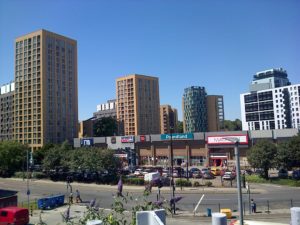
Future state of Bexley … Parts of the north of the Borough could look much like the centre of Lewisham now does – albeit with slightly shorter buildings – under Bexley’s ‘densification’ agenda. Even the more suburban areas could end up with 8-storey blocks, implying that ‘garden-grabbing’ will now be supported.
The Council expects a lot of this new housing to be fitted in by rationalisation of existing industrial land. There is an acceptance that land is running out in the plan for ‘transitional’ new parking areas that would then have to be built on, with the hope that car use can be significantly reduced in the meantime. The logic in relation to wider resource limitations is not pursued.
Wildlife gets very short shrift compared to the mountain of detail about more concrete. There will be a net loss of ground-level open space. Two Sites of Importance for Nature Conservation are slated to have housing built on part of them (east side of Southmere lake and wildlife ‘rough’ in the recreation ground by Slade Green station). Two more on Crayford Marshes are threatened with being sliced through with a new by-pass scheme. There are aspirations for green roofs, but not particularly to replace wildlife habitat, and this ignores Bexley’s inability to enforce its policy for them on certain buildings in certain areas already. The claim that wildlife will be enhanced through the Biodiversity Action Plan is a bit of a joke given that it’s two years out of date, concentrates on a handful of habitats and species and is not, therefore, a recipe for net biodiversity increase. There are no proposals for a wider set of benchmarks or monitoring to verify (or not) this assertion. Instead we can expect wildlife to be dealt with in a piecemeal fashion at individual planning application meetings, and to keep losing. In short, there is no clear vision for the future of nature in Bexley. To proceed on the basis that this should be dealt with in some tangential document – if at all – and not be at the heart of this one shows how backward Bexley Council’s approach and thinking is.
The whole ‘strategy’ is part of a bigger plan to build on lots more of the Thames Gateway area, make Bexley part of ‘city of the east’ – because room is running out elsewhere – and to increase the population of London from 8 to 11 million, supported by both Boris Johnson and Sadiq Khan.
The ‘Growth Strategy’ is a strategy for a mid 2oth century mindset where resources were supposedly unlimited and there would be a techno-fix for everything. On the face of it there are some worthy ‘aspirational’ statements and ambitions here and there about car use, minimising resource use, sustainable urban drainage etc., but fundamentally it is a more more more business-as-usual-plan, lacking the required kind of leadership, that will compound the challenges of an increasingly populated, resource-limited 21st century, rather than helping to seriously start ameliorating them.
SOME QUESTIONS TO POSE
– The Council claims that the massive change from 4,500 to 31,500 proposed new homes is because the ‘low growth’ scenario immediately following the 2008 ‘crash’ no longer applies and we are in a different situation now. Can it explain why, at the Core Strategy examination in public, Council officers proudly stated that they had, quite simply, been able to keep new development projections down to what was a reasonable level for the Borough and its character. Why is 31,500 now reasonable?
– Will the Council confirm that despite occasional reference to ‘new’ open spaces and parks, there will be a net loss of ground level open space and that parts of two designated wildlife sites are slated for building on and two others will be cut across by a by-pass if Council plans come to fruition? How does it square this with its claim that there will be a net increase in biodiversity?
– How will recourse to the Biodiversity Action Plan, which is two years out of date, relatively narrow in focus and has not been reviewed by stakeholders as to outcomes, deliver on the claim that there will be a net increase in biodiversity as a whole?
– Given that this ‘Growth Strategy’ is already proposing building on more key wildlife sites, in addition to several others where it has approved ‘development’ in recent years, how can the Council claim that wildlife has a secure and abundant long-term future in Bexley, particularly less common and habitat specialist species?
– Does Bexley Council agree that that without an adult debate about all sources of population change and how best to address them in a responsible, equitable and consensus-led way, it – or someone else – may well be back in 2025 proposing thousands more new dwellings? In explicitly wishing for boundless ‘development’, isn’t it true that the Council has decided to try and duck out of the awkward questions posed by real-world resource limits, rather than show some leadership and initiate a debate.
– The word ‘sustainable’, is repeatedly used. This should mean living within real world resource constraints and not jeopardising other species and future generations by doing otherwise. Why does the ‘Growth Strategy’ fail to spell out and address the size of the increase in Bexley’s resource consumption footprint that will result from this major proposed increase in population, and the extra downsizing (about 15%) required by existing residents, not just to keep it the same but to deliver the net decreases required by carbon emissions targets, or the UK’s commitment to bring resource consumption within sustainable levels by 2020 (which would mean a two-thirds cut)? Does the Council abdicate responsibility and think this should be left to the rest of the country or to the future to sort out?
– The document focuses heavily on buildings, their placement and design. There is no reference to the need to the zero-carbon buildings in order to avoid this ‘growth’ significantly increasing Bexley’s emissions. The existing Core Strategy meekly committed to identifying a site for zero-carbon build. Has that even happened?
– What steps will the Council take to ensure that this new build does not become prey to ‘investors’ seeking assets and not a home? Will the Council seek to prioritise housing models that will keep as much income from rented property circulating within the Borough as possible?
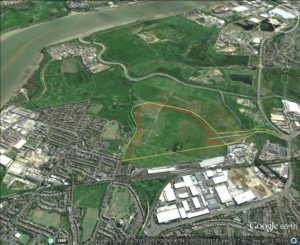
Bexley Council’s de facto policy for ‘protecting and enhancing biodiversity’ is to cram it into even less space. This Google Earth image shows the part of Crayford Marshes to be lost to a railfreight depot thanks to Bexley Council approval of the plans. Now it wants to cut a by-pass across it as well.
______________
Chris Rose, Bexley Natural Environment Forum

